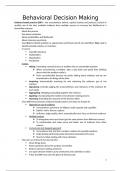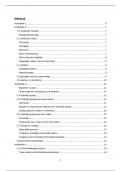Summary
Samenvatting - Behavioral Decision Making (YF3005)
- Course
- Institution
This document contains short and clear notes from the Leadership and Behavioral Decision Making course taught by Lieven Brebels in KULeuven, Antwerp and Brussels. This is in January, for all students who are doing an English Master.
[Show more]





